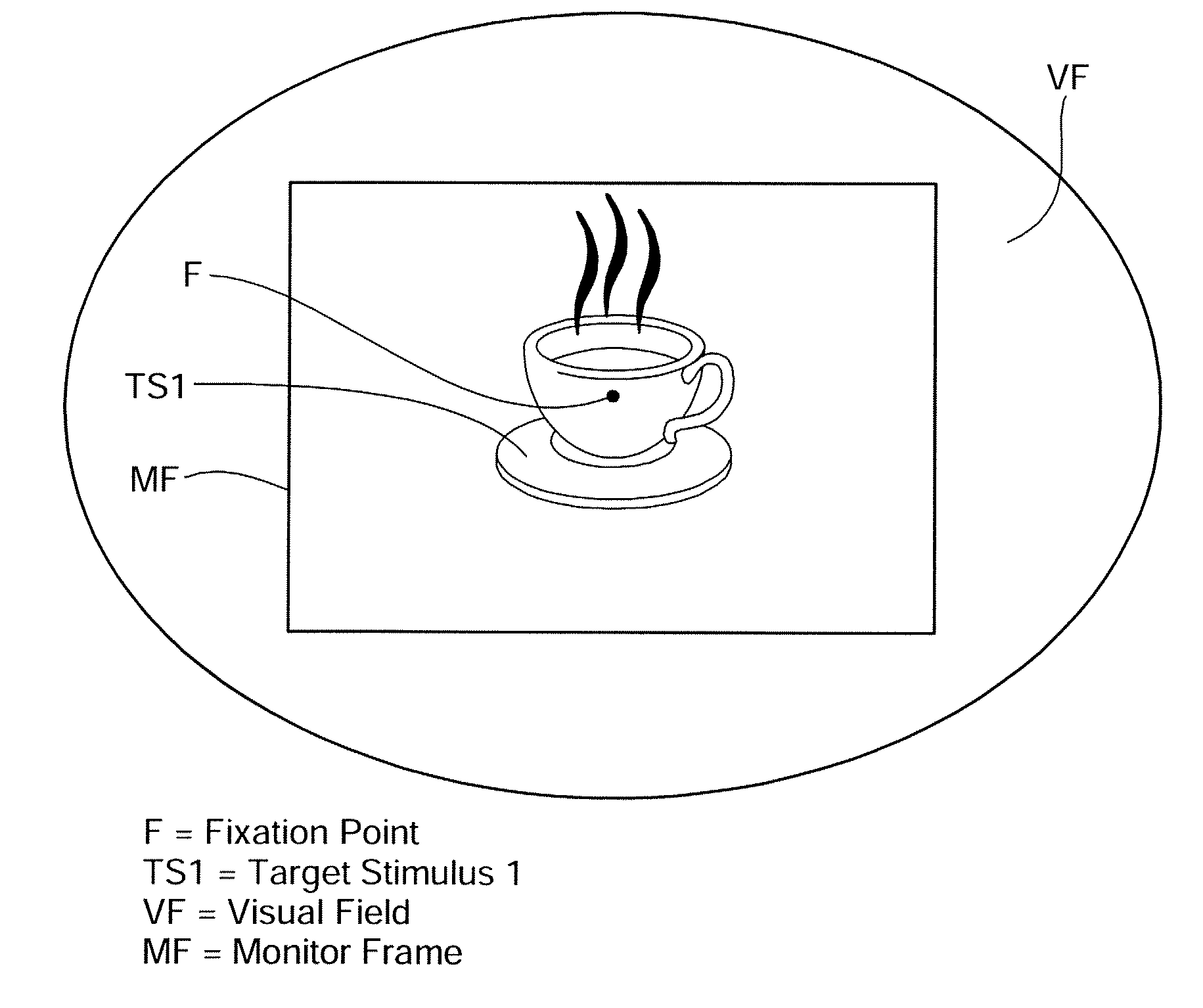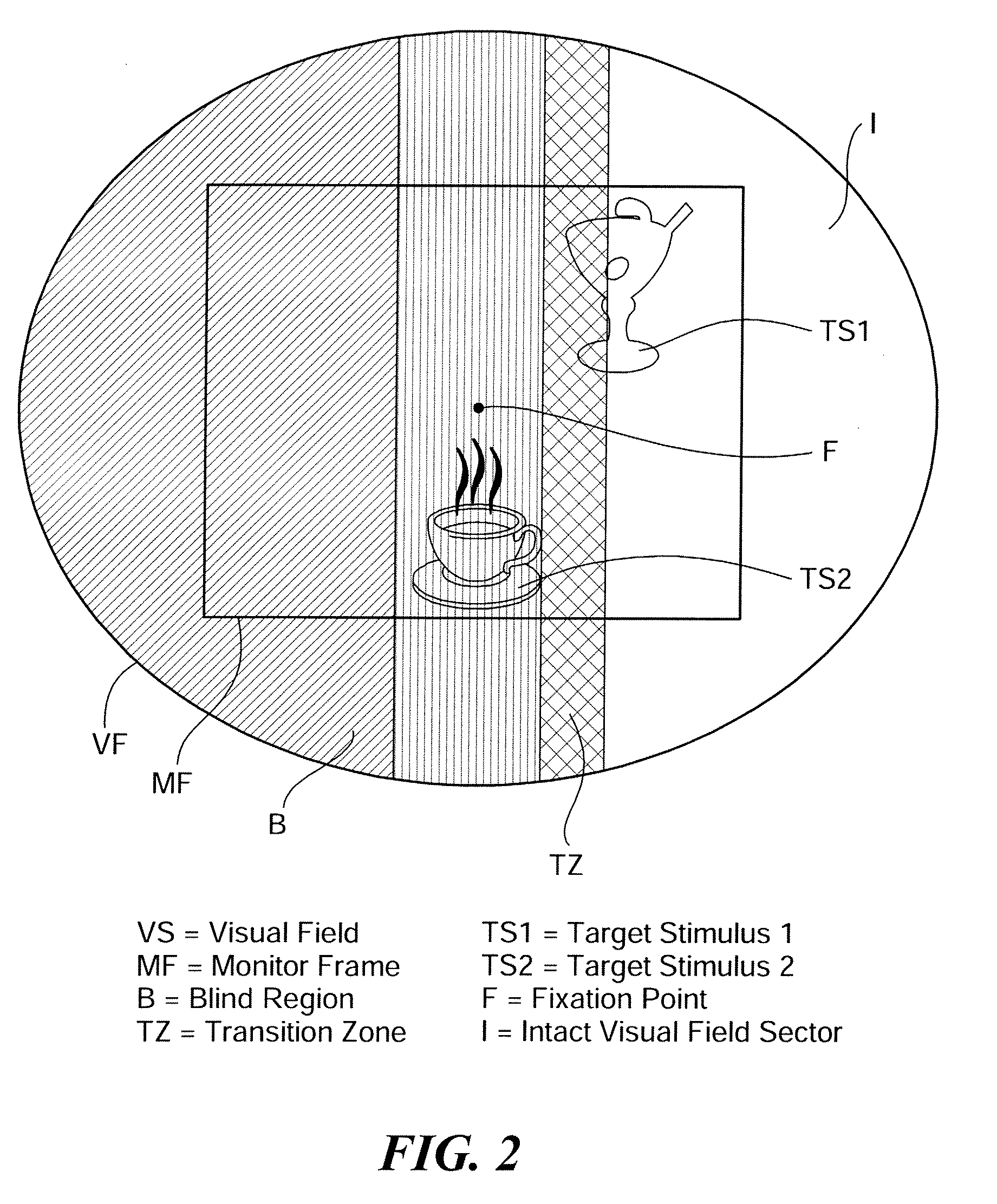Process and Device for Treating Blind Regions of the Visual Field
a technology for visual field and treatment process, applied in the field of treatment of the blind region, can solve the problems of loss of visual functions, damage to the visual system, partial or more or less complete blindness, etc., and achieve the effects of enhancing overall restoration of vision, speeding up recovery of vision, and restoring vision to a greater exten
- Summary
- Abstract
- Description
- Claims
- Application Information
AI Technical Summary
Benefits of technology
Problems solved by technology
Method used
Image
Examples
Embodiment Construction
[0032] Definitions. As used in this description and the accompanying claims, the following terms shall have the meanings indicated, unless the context otherwise requires:
[0033] The term “zone of intact vision” as used herein means a zone of the visual field (or brain area) which is substantially not injured or influenced by the events resulting in an impairment of the visual system, i.e. shows normal or negligibly deteriorated visual performance when receiving optical stimuli. In contrast, the term “zone of deteriorated vision” (which is used in a similar sense as the term “zone of residual visual function” or the term “zone of partial visual system injury”) is defined to mean the zone where events like accidents, stroke, degenerative diseases, or retinal diseases such as glaucoma or retinitis pigmentosa caused damage of the brain regions or the retina influencing the visual capabilities of the human so that the vision is at least partly deteriorated or even partly or completely lo...
PUM
 Login to View More
Login to View More Abstract
Description
Claims
Application Information
 Login to View More
Login to View More - R&D
- Intellectual Property
- Life Sciences
- Materials
- Tech Scout
- Unparalleled Data Quality
- Higher Quality Content
- 60% Fewer Hallucinations
Browse by: Latest US Patents, China's latest patents, Technical Efficacy Thesaurus, Application Domain, Technology Topic, Popular Technical Reports.
© 2025 PatSnap. All rights reserved.Legal|Privacy policy|Modern Slavery Act Transparency Statement|Sitemap|About US| Contact US: help@patsnap.com



